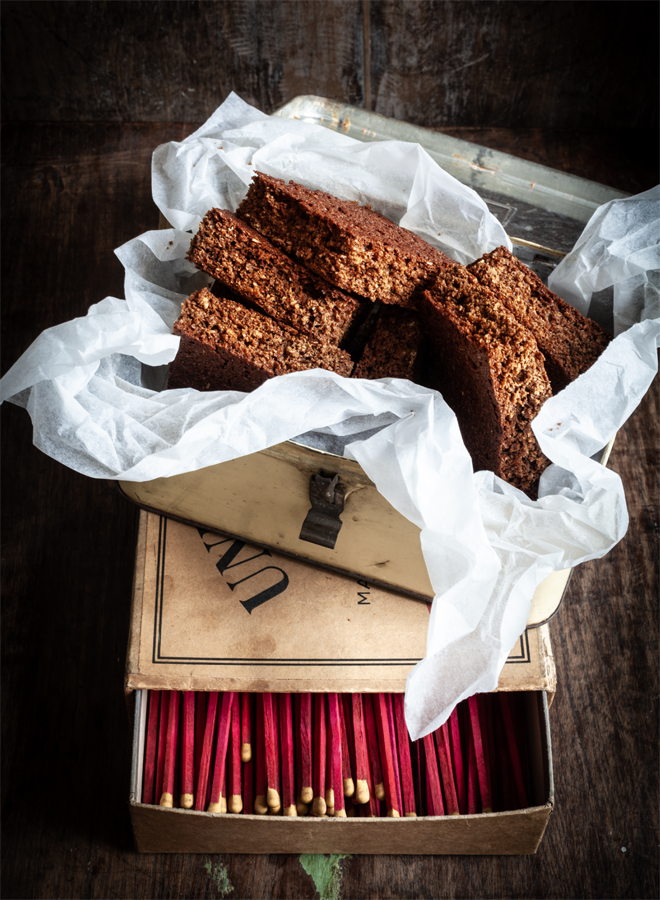
Yorkshire parkin
Parkin is a type of gingerbread that is mainly associated with the counties of Yorkshire and Lancashire. While a lot of gingerbread is rather biscuit-like, parkin is a cake. Traditionally this ginger cake is made for the festivities around Guy Fawkes Night, also known as Bonfire Night, when the thwarting of the Gunpowder Plot – a failed attack on King James I in 1605 – is commemorated in England. On this evening, large fires are lit throughout England and parades are held through the streets, with fireworks and a bonfire as the climax. It is a very politically charged tradition and although it is customary to carry an effigy of Guy Fawkes (the man caught red-handed with gunpowder to blow up the parliament), effigies of politicians are carried in some parades today, although burning them is avoided.
Bonfire Night is a very exciting and fun evening for children who are blissfully unaware of political and religious disputes. To them it is an occasion when they are given a lot of goodies and they can stay up late to watch the parade and fireworks. And toffees and parkin are certainly part of the fun.
There are a few theories as to how parkin was linked to Guy Fawkes Night on 4 November. In the past it coincided with the harvest of the oats in the first week of November, and oats are an essential part of this cake and the principal crop of the area. For the pagan feast of Samhain on 31 October, on which large bonfires were lit, there surely were cakes made with the local grain and the primary sweetener was first honey and then treacle, when sugar imports made it cheap. Martinmas on 11 November is also close and marked the end of the agrarian year and the end of the harvest. Both festivals contributed to the way that Guy Fawkes ‘Bonfire’ Night became so important. It carefully replaced a pagan and Christian celebration with a political one.
Modern recipes for parkin often don’t contain oats, only wheat flour, resulting in cakes with a finer texture that are more like Aunty Betty’s gingerbread. The recipe I give you here is made with oats, and is an acquired taste to the modern palate. The cake is best made in advance and left to rest for a few days to a couple of weeks.
For 9 squares
100 g (3½ oz) rolled oats (see here)
200 g (7 oz) golden syrup or maple syrup
45 g (1½ oz) black treacle or molasses
200 g (7 oz) butter
200 g (7 oz) oat flour
2 tsp bicarbonate of soda (baking soda)
2 tsp ground ginger
½ tsp ground nutmeg
1 egg
2 tbsp whisky or milk
pinch of sea salt
For a 20 cm (8 inch) square cake tin
Preheat your oven to 160°C (320°F) and prepare the cake tin (see here).
Briefly pulse the oats in a food processor fitted with the blade attachment.
Heat the golden syrup, black treacle and butter in a saucepan until melted and combined. Set aside to cool for a few minutes, then add the chopped oats and the remaining ingredients. Combine well with a wooden spoon or spatula. Spread the mixture into the cake tin.
Bake for 50–60 minutes and then cool in the tin. When the cake is cold, cut it into squares and pack it in an airtight container to rest for at least a day before serving.
The cake gets stickier and more moist every day and can last for 2 weeks if you can hide it for that long.